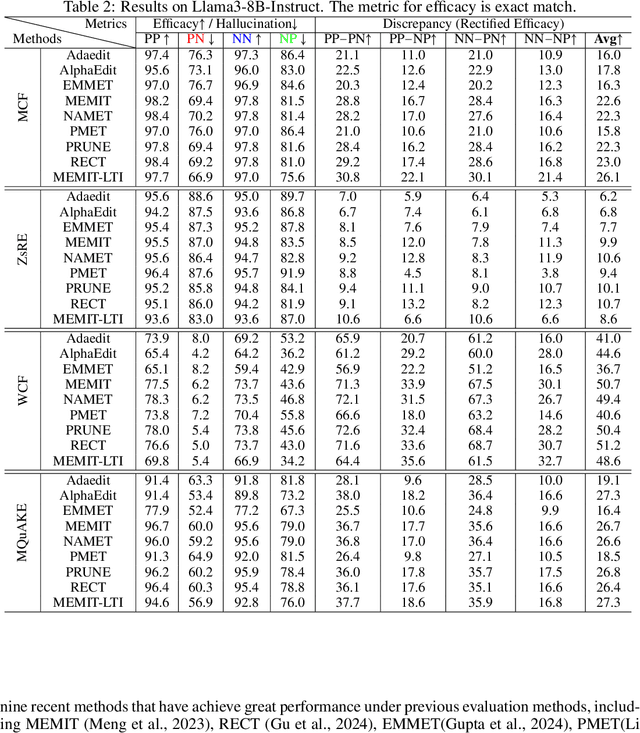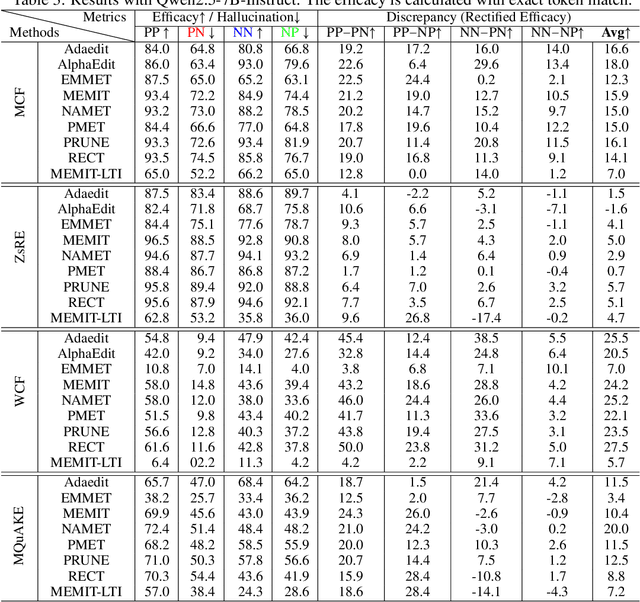Wei Liu
Peter
Isaac Lab: A GPU-Accelerated Simulation Framework for Multi-Modal Robot Learning
Nov 06, 2025Abstract:We present Isaac Lab, the natural successor to Isaac Gym, which extends the paradigm of GPU-native robotics simulation into the era of large-scale multi-modal learning. Isaac Lab combines high-fidelity GPU parallel physics, photorealistic rendering, and a modular, composable architecture for designing environments and training robot policies. Beyond physics and rendering, the framework integrates actuator models, multi-frequency sensor simulation, data collection pipelines, and domain randomization tools, unifying best practices for reinforcement and imitation learning at scale within a single extensible platform. We highlight its application to a diverse set of challenges, including whole-body control, cross-embodiment mobility, contact-rich and dexterous manipulation, and the integration of human demonstrations for skill acquisition. Finally, we discuss upcoming integration with the differentiable, GPU-accelerated Newton physics engine, which promises new opportunities for scalable, data-efficient, and gradient-based approaches to robot learning. We believe Isaac Lab's combination of advanced simulation capabilities, rich sensing, and data-center scale execution will help unlock the next generation of breakthroughs in robotics research.
On the Role of Context for Discourse Relation Classification in Scientific Writing
Oct 30, 2025Abstract:With the increasing use of generative Artificial Intelligence (AI) methods to support science workflows, we are interested in the use of discourse-level information to find supporting evidence for AI generated scientific claims. A first step towards this objective is to examine the task of inferring discourse structure in scientific writing. In this work, we present a preliminary investigation of pretrained language model (PLM) and Large Language Model (LLM) approaches for Discourse Relation Classification (DRC), focusing on scientific publications, an under-studied genre for this task. We examine how context can help with the DRC task, with our experiments showing that context, as defined by discourse structure, is generally helpful. We also present an analysis of which scientific discourse relation types might benefit most from context.
The Tool Decathlon: Benchmarking Language Agents for Diverse, Realistic, and Long-Horizon Task Execution
Oct 29, 2025Abstract:Real-world language agents must handle complex, multi-step workflows across diverse Apps. For instance, an agent may manage emails by coordinating with calendars and file systems, or monitor a production database to detect anomalies and generate reports following an operating manual. However, existing language agent benchmarks often focus on narrow domains or simplified tasks that lack the diversity, realism, and long-horizon complexity required to evaluate agents' real-world performance. To address this gap, we introduce the Tool Decathlon (dubbed as Toolathlon), a benchmark for language agents offering diverse Apps and tools, realistic environment setup, and reliable execution-based evaluation. Toolathlon spans 32 software applications and 604 tools, ranging from everyday platforms such as Google Calendar and Notion to professional ones like WooCommerce, Kubernetes, and BigQuery. Most of the tools are based on a high-quality set of Model Context Protocol (MCP) servers that we may have revised or implemented ourselves. Unlike prior works, which primarily ensure functional realism but offer limited environment state diversity, we provide realistic initial environment states from real software, such as Canvas courses with dozens of students or real financial spreadsheets. This benchmark includes 108 manually sourced or crafted tasks in total, requiring interacting with multiple Apps over around 20 turns on average to complete. Each task is strictly verifiable through dedicated evaluation scripts. Comprehensive evaluation of SOTA models highlights their significant shortcomings: the best-performing model, Claude-4.5-Sonnet, achieves only a 38.6% success rate with 20.2 tool calling turns on average, while the top open-weights model DeepSeek-V3.2-Exp reaches 20.1%. We expect Toolathlon to drive the development of more capable language agents for real-world, long-horizon task execution.
When Personalization Tricks Detectors: The Feature-Inversion Trap in Machine-Generated Text Detection
Oct 14, 2025Abstract:Large language models (LLMs) have grown more powerful in language generation, producing fluent text and even imitating personal style. Yet, this ability also heightens the risk of identity impersonation. To the best of our knowledge, no prior work has examined personalized machine-generated text (MGT) detection. In this paper, we introduce \dataset, the first benchmark for evaluating detector robustness in personalized settings, built from literary and blog texts paired with their LLM-generated imitations. Our experimental results demonstrate large performance gaps across detectors in personalized settings: some state-of-the-art models suffer significant drops. We attribute this limitation to the \textit{feature-inversion trap}, where features that are discriminative in general domains become inverted and misleading when applied to personalized text. Based on this finding, we propose \method, a simple and reliable way to predict detector performance changes in personalized settings. \method identifies latent directions corresponding to inverted features and constructs probe datasets that differ primarily along these features to evaluate detector dependence. Our experiments show that \method can accurately predict both the direction and the magnitude of post-transfer changes, showing 85\% correlation with the actual performance gaps. We hope that this work will encourage further research on personalized text detection.
GCPO: When Contrast Fails, Go Gold
Oct 09, 2025Abstract:Reinforcement learning has been widely applied to enhance the reasoning capabilities of large language models. Extending the inference limits of smaller models has become a prominent research focus. However, algorithms such as Group Relative Policy Optimization (GRPO) suffer from a clear drawback: the upper bound of a model's rollout responses is entirely determined by the model itself, preventing the acquisition of knowledge from samples that are either all incorrect or all correct. In this paper, we introduce Group Contrastive Policy Optimization (GCPO), a method that incorporates external standard reference answers. When the model cannot solve a problem, the reference answer supplies the correct response, steering the model toward an unequivocally accurate update direction. This approach offers two main advantages: (1) it improves training efficiency by fully utilizing every sample; (2) it enables the model to emulate the problem solving strategy of the reference answer during training, thereby enhancing generalization in reasoning. GCPO achieves outstanding results across multiple benchmark datasets, yielding substantial improvements over the baseline model. Our code is available at: https://github.com/AchoWu/GCPO.
Is Model Editing Built on Sand? Revealing Its Illusory Success and Fragile Foundation
Oct 01, 2025



Abstract:Large language models (LLMs) inevitably encode outdated or incorrect knowledge. Updating, deleting, and forgetting such knowledge is important for alignment, safety, and other issues. To address this issue, model editing has emerged as a promising paradigm: by precisely editing a small subset of parameters such that a specific fact is updated while preserving other knowledge. Despite its great success reported in previous papers, we find the apparent reliability of editing rests on a fragile foundation and the current literature is largely driven by illusory success. The fundamental goal of steering the model's output toward a target with minimal modification would encourage exploiting hidden shortcuts, rather than utilizing real semantics. This problem directly challenges the feasibility of the current model editing literature at its very foundation, as shortcuts are inherently at odds with robust knowledge integration. Coincidentally, this issue has long been obscured by evaluation frameworks that lack the design of negative examples. To uncover it, we systematically develop a suite of new evaluation methods. Strikingly, we find that state-of-the-art approaches collapse even under the simplest negation queries. Our empirical evidence shows that editing is likely to be based on shortcuts rather than full semantics, calling for an urgent reconsideration of the very basis of model editing before further advancements can be meaningfully pursued.
RewardDance: Reward Scaling in Visual Generation
Sep 10, 2025Abstract:Reward Models (RMs) are critical for improving generation models via Reinforcement Learning (RL), yet the RM scaling paradigm in visual generation remains largely unexplored. It primarily due to fundamental limitations in existing approaches: CLIP-based RMs suffer from architectural and input modality constraints, while prevalent Bradley-Terry losses are fundamentally misaligned with the next-token prediction mechanism of Vision-Language Models (VLMs), hindering effective scaling. More critically, the RLHF optimization process is plagued by Reward Hacking issue, where models exploit flaws in the reward signal without improving true quality. To address these challenges, we introduce RewardDance, a scalable reward modeling framework that overcomes these barriers through a novel generative reward paradigm. By reformulating the reward score as the model's probability of predicting a "yes" token, indicating that the generated image outperforms a reference image according to specific criteria, RewardDance intrinsically aligns reward objectives with VLM architectures. This alignment unlocks scaling across two dimensions: (1) Model Scaling: Systematic scaling of RMs up to 26 billion parameters; (2) Context Scaling: Integration of task-specific instructions, reference examples, and chain-of-thought (CoT) reasoning. Extensive experiments demonstrate that RewardDance significantly surpasses state-of-the-art methods in text-to-image, text-to-video, and image-to-video generation. Crucially, we resolve the persistent challenge of "reward hacking": Our large-scale RMs exhibit and maintain high reward variance during RL fine-tuning, proving their resistance to hacking and ability to produce diverse, high-quality outputs. It greatly relieves the mode collapse problem that plagues smaller models.
Joint Modeling of Entities and Discourse Relations for Coherence Assessment
Sep 04, 2025Abstract:In linguistics, coherence can be achieved by different means, such as by maintaining reference to the same set of entities across sentences and by establishing discourse relations between them. However, most existing work on coherence modeling focuses exclusively on either entity features or discourse relation features, with little attention given to combining the two. In this study, we explore two methods for jointly modeling entities and discourse relations for coherence assessment. Experiments on three benchmark datasets show that integrating both types of features significantly enhances the performance of coherence models, highlighting the benefits of modeling both simultaneously for coherence evaluation.
Design and Optimization of Reinforcement Learning-Based Agents in Text-Based Games
Sep 03, 2025Abstract:As AI technology advances, research in playing text-based games with agents has becomeprogressively popular. In this paper, a novel approach to agent design and agent learning ispresented with the context of reinforcement learning. A model of deep learning is first applied toprocess game text and build a world model. Next, the agent is learned through a policy gradient-based deep reinforcement learning method to facilitate conversion from state value to optimal policy.The enhanced agent works better in several text-based game experiments and significantlysurpasses previous agents on game completion ratio and win rate. Our study introduces novelunderstanding and empirical ground for using reinforcement learning for text games and sets thestage for developing and optimizing reinforcement learning agents for more general domains andproblems.
* 6 papges
UQ: Assessing Language Models on Unsolved Questions
Aug 25, 2025Abstract:Benchmarks shape progress in AI research. A useful benchmark should be both difficult and realistic: questions should challenge frontier models while also reflecting real-world usage. Yet, current paradigms face a difficulty-realism tension: exam-style benchmarks are often made artificially difficult with limited real-world value, while benchmarks based on real user interaction often skew toward easy, high-frequency problems. In this work, we explore a radically different paradigm: assessing models on unsolved questions. Rather than a static benchmark scored once, we curate unsolved questions and evaluate models asynchronously over time with validator-assisted screening and community verification. We introduce UQ, a testbed of 500 challenging, diverse questions sourced from Stack Exchange, spanning topics from CS theory and math to sci-fi and history, probing capabilities including reasoning, factuality, and browsing. UQ is difficult and realistic by construction: unsolved questions are often hard and naturally arise when humans seek answers, thus solving them yields direct real-world value. Our contributions are threefold: (1) UQ-Dataset and its collection pipeline combining rule-based filters, LLM judges, and human review to ensure question quality (e.g., well-defined and difficult); (2) UQ-Validators, compound validation strategies that leverage the generator-validator gap to provide evaluation signals and pre-screen candidate solutions for human review; and (3) UQ-Platform, an open platform where experts collectively verify questions and solutions. The top model passes UQ-validation on only 15% of questions, and preliminary human verification has already identified correct answers among those that passed. UQ charts a path for evaluating frontier models on real-world, open-ended challenges, where success pushes the frontier of human knowledge. We release UQ at https://uq.stanford.edu.
 Add to Chrome
Add to Chrome Add to Firefox
Add to Firefox Add to Edge
Add to Edge